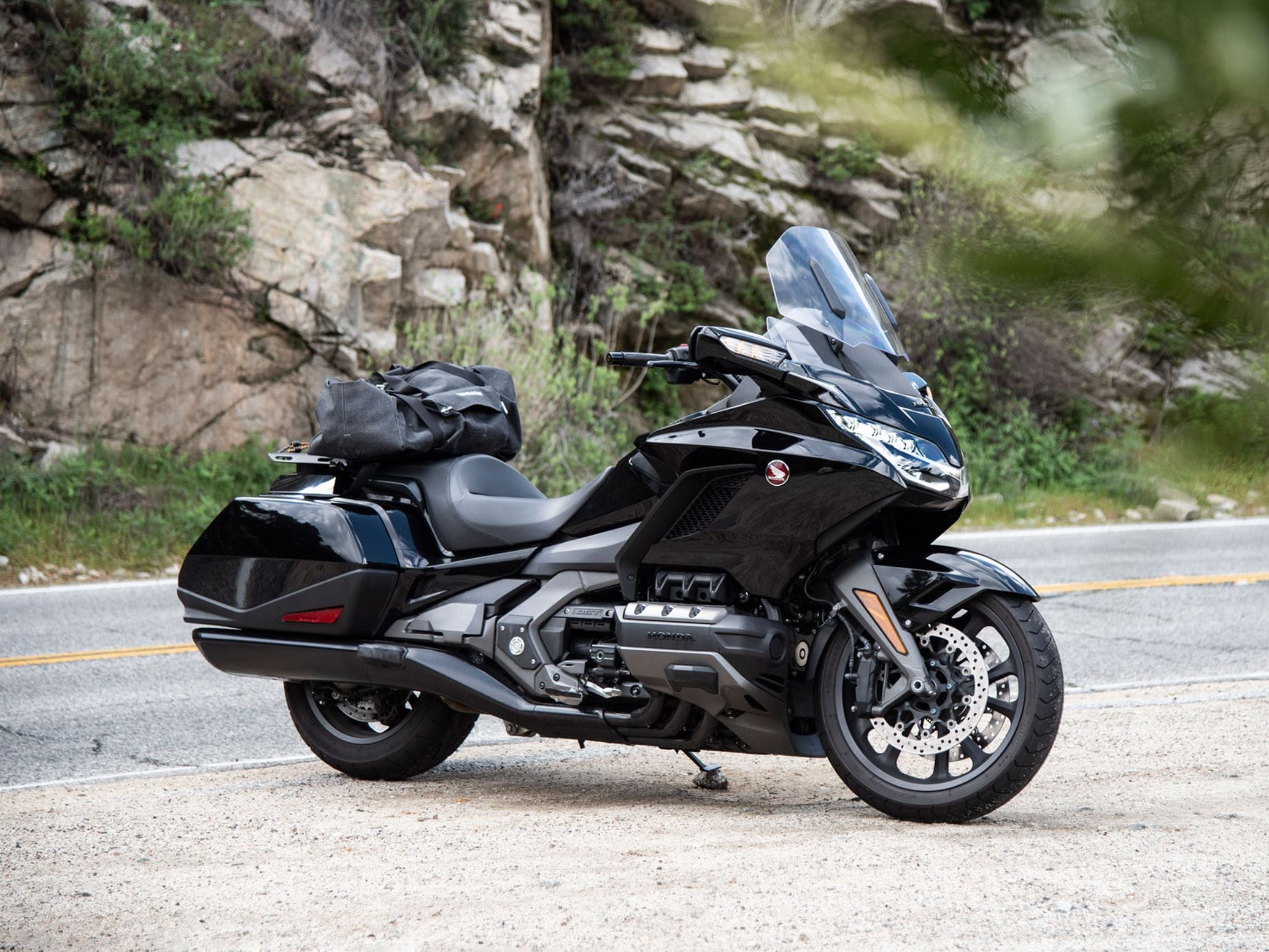2020 Honda Gold Wing DCT Ride Review
Is the Honda Gold Wing the ultimate ride for the apocalypse?
by Basem Wasef
“The Gold Wing makes a great airport shuttle,” my friendly local neighborhood Honda PR person suggested a few weeks back. I was traveling constantly not all that long ago, and the thought of strapping luggage to the tail and getting free motorcycle parking at the airport seemed like a great idea.
And then, coronavirus rolled around.

Grounded from travel with a new 2020 Honda Gold Wing DCT sitting in my driveway, I instantly saw the plus-sized touring bike’s new role. This wasn’t an airport ride; it was a Two-Wheeled Bug-out Vehicle for the Pandemic Apocalypse.

Okay, maybe the threat of mass mayhem wasn’t quite so imminent (though toilet paper is getting a bit scarce), but the six-cylinder GL does make a compelling case as a hypothetical escape vehicle. Tipping the scales at a portly 787 pounds (or up to 847 pounds in even heftier configurations), my $25,000 loaner has the heft and substance to at least offer psychological reassurance as a rolling fortress of fortitude for the pre-apocalyptic uncertainty. Packing a 5.6-gallon fuel tank with a claimed EPA estimate of 42 mpg, the Gold Wing could, at least according to the good ol’ spec sheet, travel 231 miles before requiring me to fend off zombies for a splash of dino juice. The 42 mpg figure is credible, though I had trouble hypermiling the lumbering fella since the thrust is addictively accessible. While the 1,833cc flat-six powerplant is beastly big, it’s also a low-revving honey of an engine that spins smooth, easy power that, at least in the dual-clutch DCT model, transfers torque (mostly) seamlessly through a shaft drive to the 200mm rear tire. Short shifts are easy thanks to the engine’s generous low-end power, and a tall seventh gear enables cruising at high speeds with mellow rpm.

If you’ve never ridden an automatic transmission motorcycle, leaving your left-hand limbs idle can take a bit of getting used to. While the Honda assumes shifting duties (unless you override with the thumb- and forefinger-operated paddle shifters), your left hand still has plenty to fiddle with thanks to multimedia controls and a few other buttons, including a rocker switch to raise or lower the windscreen. The shield tucks down when the bike is switched off (via round knob ahead of the dashboard), and reverts to its last position when the bike is fired up again. Handy. In addition to good protection from turbulence, there’s a small, spring-loaded plastic airfoil that can be raised to let some windflow through in order to prevent buffeting. Also nifty. Less than perfect? The multimedia system, which requires a headset attached for Apple CarPlay to work, and multifunction keys that counterintuitively switch actions depending on what’s displayed on the screen. Considering Honda’s past triumphs in user interfaces—and the potential for digital displays considering the larger-than-average real estate of the Gold Wing’s dashboard area—the deficiencies are somewhat surprising.

Although the dual-clutch DCT transmission generally works intuitively, parking lot speed maneuvers from a standstill require some attention since the engagement point of the clutch can be difficult to predict. Coupled with the considerable torque produced by the engine, it’s easy to lurch ahead with a little verve than you intended. Similarly, of the available ride modes—Sport, Tour, Rain, and Econ—you’ll want Tour every time you’re riding on dry tarmac, hands down. Gear shifts in Sport feel unnecessarily jerky, while Tour manages to change gears crisply but not abruptly. Remember that when you’re threading through lanes of frantic traffic while getting the heck outta Dodge. Parking lot maneuvers are aided by an electric forward and reverse that achieves walking speed, controlled by the up- or downshift finger controls. The system is a godsend when you need to get out of an uphill spot, though the system sometimes has slight speed fluctuations on level ground.

When it comes to high-speed cornering, the Gold Wing’s relatively low center of gravity means it swings an arc better than you might expect. But you will touch down, earlier on left turns than right, in the canyons. The flat-six’s prodigious power makes it easy to make up for reduced corner speeds when you hit the straights, and it’s easy to feel smug riding upright in absolute comfort while sportbike goons are hunched over their steeds.

The standard, top case-free Gold Wing has a low-profile silhouette which makes a case for bagger-like style over long-distance substance. But the Tour or Tour DCT models would arguably be better escape rides, given the added cargo volume of their top case, which can swallow a full-face helmet (and enough provisions to get you out of the urban jungle and into your hideout cabin in the woods). The best part of the deal? Saddling up with a Gold Wing of any flavor would leave you with a bike ready for almost anything, apocalypse or not. It may not be an ideal all-rounder for every riding scenario, but as a bike that stands apart from the crowd, the Gold Wing makes a near-ideal outlier for the long haul.
GEAR BOX


